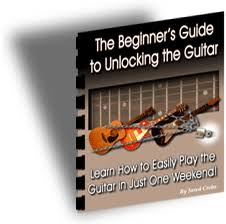Why Legal Music Downloads Are Better
Millions of people download music from the internet but we all need to be careful that these are legal music downloads. It is easy to be tempted to download music for free on peer-to-peer sites but this practice can lead to a very massive legal headache and fines in the thousands of dollars range.
Since the music industry is losing million of dollars through piracy and that they have successfully won several battles, they are taking notice of who is doing what out there in cyber space. They have the money and the time to go after the worst offenders. Several counts of piracy may not seem like a big deal but when you consider that every original download is one count and every upload is one count of piracy, the numbers can start to skyrocket.
Depending on how much music you have pirated, you can end up owing the record companies thousand of dollars. Some people have even racked up over a million dollars in fines and copyright fees. Most of the people that are caught not using legal music downloads are college students or average citizens. The record companies will often settle out of court and have only made examples of a select few.
By paying for legal music downloads, you buy the song and the right to do what you want to with it. Any DRM restrictions are handled by the music site before you even consider purchasing a song. Although it is best to check and make sure that the site has handled the DRM restrictions if you are not using one of the big name music sites to get your music.
Most people only want a track or two off of an album, so you are looking at cost of $0. 99 to $1. 29 per track. This is not a moral decision. By paying for your music upfront you could be saving yourself a lot of money.
Before the age of cyberspace and peer-to-peer sharing, the piracy laws were written that even buying an actual album and loaning it a friend was technically breaking the law. The music industry could not stop this, so they just had to accept the loss. They no longer do today and they are not going down willingly.
Since the age of the internet, everyone can be found sooner or later. So, it is best to pay for legal music downloads now. You are getting the better deal when you consider the alternative. - 18762
Since the music industry is losing million of dollars through piracy and that they have successfully won several battles, they are taking notice of who is doing what out there in cyber space. They have the money and the time to go after the worst offenders. Several counts of piracy may not seem like a big deal but when you consider that every original download is one count and every upload is one count of piracy, the numbers can start to skyrocket.
Depending on how much music you have pirated, you can end up owing the record companies thousand of dollars. Some people have even racked up over a million dollars in fines and copyright fees. Most of the people that are caught not using legal music downloads are college students or average citizens. The record companies will often settle out of court and have only made examples of a select few.
By paying for legal music downloads, you buy the song and the right to do what you want to with it. Any DRM restrictions are handled by the music site before you even consider purchasing a song. Although it is best to check and make sure that the site has handled the DRM restrictions if you are not using one of the big name music sites to get your music.
Most people only want a track or two off of an album, so you are looking at cost of $0. 99 to $1. 29 per track. This is not a moral decision. By paying for your music upfront you could be saving yourself a lot of money.
Before the age of cyberspace and peer-to-peer sharing, the piracy laws were written that even buying an actual album and loaning it a friend was technically breaking the law. The music industry could not stop this, so they just had to accept the loss. They no longer do today and they are not going down willingly.
Since the age of the internet, everyone can be found sooner or later. So, it is best to pay for legal music downloads now. You are getting the better deal when you consider the alternative. - 18762
About the Author:
With all the recent lawsuits about illegal music downloading, you definitely don't want to take any risks. Check out MusicDownloadsGuide.com for real user reviews of legal music downloads services.




